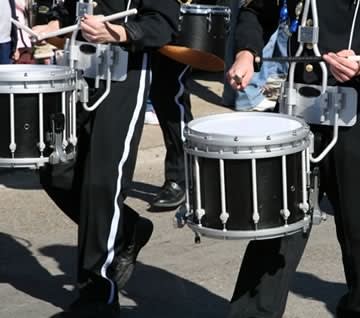Land of My Birth:
David Ben-Gurion, who was not only Prime Minister but also Defense Minister, felt that it was important to show Israel’s strength in military parades. Even in the midst of the War of Independence, only two and a half months after the State of Israel was established, he organized the first parade. This was on the twentieth of Tamuz, “Herzl and Bialik Day,” and it included a display of vehicles that were captured by the IDF. In the celebrations at the end of the first year of the country, it was clear that the main event would be a military parade in Tel Aviv. (Since Jerusalem was divided by a wall, it was forbidden for Israel to bring in the military strength that would be shown in the parade.) The Speaker of the Knesset, Yosef Shprinchak, gave this idea a prominent place in his speech. Here is what he said:
“The heroes of Israel will march along the rejuvenated paths of Zion, and they can be given credit through their strength for the rising banner of freedom of the House of Israel. With pride and with joy we will accompany the parade of the Israel Defense Forces. In our hearts, we will recite the ‘Shehechiyanu’ blessing to see them alive, whole, and ready to die in order to guard the peace and the completeness of the State of Israel…”
Many preparations were made for the parade, including watching the large crowds and making sure that they would remain at the side of the road. The commander of the parade requested that barbed wire fences be installed along the route. This suggestion was rejected, because it was felt that the barbed wire would raise frightening memories of the recent Holocaust. In the end, instead of fences, ropes were stretched between the parade route and the crowds. The parade began as it had been planned, passed by grandstands, and the participants saluted the prominent people seated there. About 1000 people were seated, including the Prime Minister, government ministers, the Chief of Staff, rabbis, foreign ambassadors, and bereaved parents, among others. But from that point on the marchers were not able to continue on their way.
Close to 300,000 enthusiastic spectators, about 40% of the population of the country, had come to see the strength of the new Jewish nation. The waves of joy were extreme. People climbed trees and electric poles, looked on from every available porch, and mainly pushed into the parade route, blocking the way. The police did not want to interfere with the joy of the celebrants, and they did not use force against the flowing crowds. Instead, they decided to stop the parade. Over loudspeakers, they announced to the hundreds of thousands of disappointed spectators that the parade had been cancelled. This failed operation was given the nickname, “The parade that did not march.”
There was a small comfort in the fact that about one and a half hours after the cancellation, after most of the crowd had dispersed, the sounds of the IDF band were once again heard, and the parade started again. The route had been moved to side streets, without all of the original forces, but this time there was a smaller and better disciplined crowd.
Ben-Gurion was not happy about the organizational failure, and he decided to establish a formal Inquiry Commission. Here is what was reported in the newspaper Maariv:
“The Commission has finished writing its findings about who was responsible for the disturbances of the parade. The conclusions of the Commission were accepted unanimously by its three members: Yisrael Rokach, General Yigal Yadin, and Judge Y. Shapiro. The conclusions fill six typed pages. They were given to the Prime Minister, who will make his final decisions based on this report.”
The consequences were not long in coming. Ben-Gurion dismissed three commanders from the army who were found to be responsible, including the commander of the parade.
The Independence Day parades continued to take place for the next twenty years. There are those who would like to see them renewed. What do you think?
Reprinted with permission from Zomet Institute (www.zomet.org.il).
The words of this author reflect his/her own opinions and do not necessarily represent the official position of the Orthodox Union.
